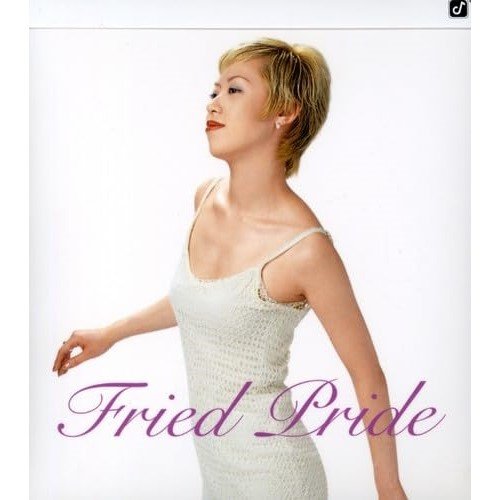Angela Hewitt, Australian Chamber Orchestra, Richard Tognetti - Bach: Keyboard Concertos Nos. 1-7, BWV 1052-8 etc. (2006)
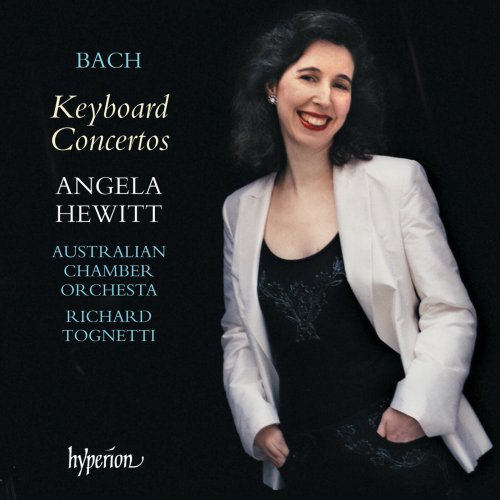
Artist: Angela Hewitt, Australian Chamber Orchestra, Richard Tognetti
Title: Bach: Keyboard Concertos Nos. 1-7, BWV 1052-8 etc.
Year Of Release: 2006
Label: Hyperion
Genre: Classical
Quality: flac lossless (tracks) +Booklet
Total Time: 02:32:34
Total Size: 596 mb
WebSite: Album Preview
TracklistTitle: Bach: Keyboard Concertos Nos. 1-7, BWV 1052-8 etc.
Year Of Release: 2006
Label: Hyperion
Genre: Classical
Quality: flac lossless (tracks) +Booklet
Total Time: 02:32:34
Total Size: 596 mb
WebSite: Album Preview
CD1
01. Keyboard Concerto No. 1 in D Minor, BWV 1052: I. Allegro
02. Keyboard Concerto No. 1 in D Minor, BWV 1052: II. Adagio
03. Keyboard Concerto No. 1 in D Minor, BWV 1052: III. Allegro
04. Keyboard Concerto No. 7 in G Minor, BWV 1058 (after BWV 1041): I. [Allegro]
05. Keyboard Concerto No. 7 in G Minor, BWV 1058 (after BWV 1041): II. Andante
06. Keyboard Concerto No. 7 in G Minor, BWV 1058 (after BWV 1041): III. Allegro assai
07. Brandenburg Concerto No. 5 in D Major, BWV 1050: I. Allegro
08. Brandenburg Concerto No. 5 in D Major, BWV 1050: II. Affettuoso
09. Brandenburg Concerto No. 5 in D Major, BWV 1050: III. Allegro
10. Concerto for Flute, Violin and Harpsichord in A Minor, BWV 1044: I. Allegro
11. Concerto for Flute, Violin and Harpsichord in A Minor, BWV 1044: II. Adagio ma non tanto e dolce
12. Concerto for Flute, Violin and Harpsichord in A Minor, BWV 1044: III. Tempo di alla breve
CD2
01. Keyboard Concerto No. 4 in A Major, BWV 1055: I. Allegro
02. Keyboard Concerto No. 4 in A Major, BWV 1055: II. Larghetto
03. Keyboard Concerto No. 4 in A Major, BWV 1055: III. Allegro ma non tanto
04. Keyboard Concerto No. 3 in D Major, BWV 1054 (After BWV 1042): I. [Allegro]
05. Keyboard Concerto No. 3 in D Major, BWV 1054 (After BWV 1042): II. Adagio e piano sempre
06. Keyboard Concerto No. 3 in D Major, BWV 1054 (After BWV 1042): III. Allegro
07. Keyboard Concerto No. 2 in E Major, BWV 1053: I. [Allegro]
08. Keyboard Concerto No. 2 in E Major, BWV 1053: II. Siciliano
09. Keyboard Concerto No. 2 in E Major, BWV 1053: III. Allegro
10. Keyboard Concerto No. 5 in F Minor, BWV 1056: I. [Allegro]
11. Keyboard Concerto No. 5 in F Minor, BWV 1056: II. Adagio
12. Keyboard Concerto No. 5 in F Minor, BWV 1056: III. Presto
13. Keyboard Concerto No. 6 in F Major, BWV 1057: I. [Allegro]
14. Keyboard Concerto No. 6 in F Major, BWV 1057: II. Andante
15. Keyboard Concerto No. 6 in F Major, BWV 1057: III. Allegro assai
When Johann Sebastian Bach left his post as Kapellmeister at the court of Prince Leopold of Anhalt-Cöthen in 1723 to go to the more prestigious city of Leipzig as Kantor of the Thomaskirche, he had no idea of the troubles that awaited him there. In Cöthen he had spent six very happy years composing mainly instrumental music, including the Brandenburg Concertos, the first volume of the Well-tempered Clavier, and the French Suites. He had, however, hesitated before accepting the new position, as the switch from Kapellmeister (director of music) to Kantor (director of church music) was a step downwards in status, but he knew that Leipzig would be a better place to educate his children. His first wife had died suddenly in 1720, leaving him with three sons and a daughter (three others, including twins, had died in infancy), but a year later he married Anna Magdalena Wilcken, a professional singer sixteen years his junior, and the mother-to-be of thirteen more Bachs. Although his income increased with the move to Leipzig, the high cost of living in that city made it difficult for such a large family. As part of his duties as Kantor and Director Musices, Bach was responsible for music at Leipzig’s four major churches and in the choir school, at the university, and on civic occasions. None of the authorities of these institutions appreciated Bach’s genius (one of them even dared to say that Bach showed ‘little inclination to work’), and their penny-pinching and narrow-mindedness were a constant source of annoyance.
It was therefore no doubt with great pleasure that Bach accepted, in 1729 at the age of forty-four, the post of director of the Collegium Musicum, a music society founded in 1702 at Leipzig University by Georg Philipp Telemann. It consisted of a talented group of music students that was probably augmented by professionals when needed. Their concerts were held in the popular surroundings of Zimmermann’s Coffee House, where people came together to smoke, drink and listen to pleasant music. In summer, they played outdoors. Surely it was especially crowded during the spring and fall when Leipzig played host to many foreign merchants who came for the fairs.
These informal concerts must have been a happy contrast for Bach to the endless problems at the Thomaskirche. He remained director for the next ten years, composing many secular instrumental works during this time. After that time was up, he turned his attention towards composing his ‘summation works’: the B minor Mass, the ‘Goldberg’ Variations, the Musical Offering, and the Art of Fugue.
The seven keyboard concertos were composed during the final years of his directorship of the Collegium Musicum, although many exist in other forms that probably originated in Cöthen. Before 1710, Bach had copied out works in concerto form by both Albinoni and Telemann (his favourite way to learn new things), and during the next few years adapted concertos by Vivaldi, Torelli, Marcello and others. It is not known whether he composed his own concertos during his stay in Weimar (1708–1717), although the Preludes to the English Suites show to what extent he had absorbed the Italian concerto style. His first known works in this genre are the famous Brandenburg Concertos, dating from 1721. They were written in Cöthen, and presented to the Margrave of Brandenburg, Christian Ludwig, from whom Bach was possibly seeking employment. The Margrave left them to gather dust, but, fortunately for us, they were picked up at his death in 1734 by Bach’s pupil, Kirnberger.
It is said that if we sat down and copied out all of the music Bach wrote it would take us a lifetime. Yet he was composing it as well. So it is no wonder that from time to time he borrowed from himself. Such is the case with the keyboard concertos. If an original version has not been handed down to us (for instance, the A minor Violin Concerto became the G minor Keyboard Concerto; the E major Violin Concerto was turned into the D major Keyboard Concerto; and so on), then there probably was one but it has been lost. Concerto movements also ended up in cantatas, often with florid parts being added to an already busy original. This recycling is one of the arguments I use to defend the performance of Bach on the modern piano. If he could write for violin, oboe or voice a singing, melodic line that would have its natural inflections, phrasing, and rise and fall, then why would he not have wanted to hear it on a keyboard instrument that was capable of doing the same thing (since the harpsichord could not)?
All of these points – borrowing from previous material, the recycling in cantatas, and the use of long melodic lines – can be studied in the most famous and powerful of the seven concertos, the Concerto No 1 in D minor, BWV1052. Here the original version is without doubt a lost violin concerto as so much of the solo writing is characteristic of that instrument (especially in the use of bariolage, the name given to passages which rotate around a single note on an open string). To this day there is discussion among musicologists as to whether the original concerto was actually written by Bach or by somebody else. I cannot think of another composer who could even come close to rivalling the amazing intensity and scope of this piece, not to mention the dramatic and emotional impact it creates.
Certainly the opening tutti, with its unison writing, announces something special, and very different from the other keyboard concertos. This theme reappears throughout, separating the different excursions of the soloist. The most dramatic part of the movement is where the keyboard has a brief moment on its own, taking off over a long sustained pedal note in the bass. The Adagio also begins with a unison tutti – this time a ground bass which is present in every bar, modulating to different keys and sometimes fragmented. The soloist is given an impassioned aria, and engages in dialogue with the violins and violas. The whole is totally reminiscent of Passion music. The third movement is the most brilliant finale of the concertos, not letting up for a moment, and demands the utmost in rhythmic precision and virtuosity.
The first two movements of this concerto appear in the Cantata BWV146, Wir müssen durch viel Trübsal in das Reich Gottes eingehen (‘We must pass through much tribulation to enter God’s kingdom’). Both movements give the solo part to the organ in a slightly less developed form. Amazingly, in what seems like an already very elaborate slow movement, Bach adds a four-part chorus above the keyboard part. The third movement appears as the Sinfonia to Cantata BWV188, Ich habe meine Zuversicht (‘I have my trust in God’). Both of these works were written between 1726 and 1728, so probably pre-date the keyboard concerto. The popularity of this work dates back to Mendelssohn’s performance of it in Leipzig in 1837, and the subsequent publication of the score.
The Concerto No 7 in G minor, BWV1058 is one of Bach’s most popular concerto works. Known more widely as the Concerto in A minor for violin, BWV1041 it is nevertheless extremely powerful on the keyboard – and especially so on the modern piano. Its first movement is forthright, determined, allowing for no nonsense. The few lighter passages do not last long. The Andante is stately, beginning quietly with an ostinato bass that introduces another of those beautiful melodies that only Bach could write. The feeling is quite rhapsodic, although the form is strict. The fireworks are, as usual in these works, kept for the last movement which begins and ends as a fugue. The tempo is quick but should not be rushed. It is more important to feel the swing of the dance than to show off.
The most important thing to note about the Brandenburg Concerto No 5 in D major, BWV1050 is that this was the first time ever that the harpsichord had been used in a concerto for anything other than the continuo. Always in the background, providing the necessary colour and rhythmic stability (and often conducting as well), the continuo player never really had a chance to shine; but here he takes his revenge! At the beginning of the opening Allegro it almost seems as though the other soloists (flute and violin) have the more important musical dialogue, but gradually the keyboard asserts itself, finally brushing all others aside and launching into an extraordinary sixty-five-bar cadenza. If I say that it is all entirely written out by Bach, it is only because I am frequently asked after concert performances if I wrote it myself! It begins quite lyrically, but then comes a tremendous build-up over a long pedal point in the bass. Some really wild figurations and large jumps in the left hand take us to a climax in B minor. A brief five-bar bridge masterfully returns us to the tonic and the orchestral ritornello. It is thought that Bach might have been inspired to write such a piece to show off the new two-manual harpsichord he had just received from Berlin. It was certainly written with a powerful instrument in mind.
The second movement in B minor, marked Affettuoso, is a touching trio sonata for the three soloists. Unlike the middle movement of the Triple Concerto, however, there is need for a continuo group to accompany the flute and violin when the keyboard is not playing as a soloist. Normally, of course, the one harpsichordist would do both, but here we have used both instruments to clearly separate those passages (see note below on the use of continuo in this recording). The mood is gentle and tender, but with the sense of sorrow that often seems to come with the key of B minor.
The final Allegro is a spirited gigue with an upbeat that gives it a wonderful ‘lift’. Throughout this concerto there is no second violin part – only a small ‘ripieno’ group (we used three violins). Bach himself usually played the viola, but obviously in this piece was seated at the harpsichord, so his place was no doubt filled by the second violinist.
The Triple Concerto in A minor, BWV1044 uses the same solo group as does the Brandenburg Concerto No 5 (keyboard, flute and violin). It is, however, totally different in many ways, the first being that the keyboard part (with the exception of the cadenza of the Brandenburg) is far more present and is easily the most prominent of the three solo instruments in the outer movements. Perhaps this is because those movements originated as a solo keyboard work, the Prelude and Fugue in A minor, BWV894 (which I recorded previously along with the French Suites on Hyperion CDA67121/2). It makes a fascinating study to compare the two versions to see how effortlessly he turned a solo prelude into an imposing concerto movement. It also is a clue to how we should conceive and interpret many of his solo pieces in orchestral terms. This long movement is driven forward with the use of triplets, dotted notes and pizzicatos.
The second movement is a transcription of the middle movement of the Trio Sonata in D minor, BWV527 for organ. Originally in F major, it is set here in C major. It is almost in the style galant of his son, C P E Bach, although the chromaticisms give him away, as do the amazing shifts in tonality. The dialogue between the three soloists is continuous, but finally comes to rest on the dominant of A minor (the same type of cadence is used at the end of the slow movement of the F minor Concerto). To the original tempo marking of Adagio Bach adds ma non tanto which should serve as a warning not to take it too slowly.
In the solo harpsichord version, the last movement was a fugal moto perpetuo that simply allowed the soloist to show off. With the addition of the orchestra and other soloists, however, Bach produces a work of amazing impact and religious fervour. The swirling triplets of the keyboard part are introduced, interrupted, and finally concluded by a rousing chorus written in alla breve time and reminiscent of the stile antico (Renaissance polyphony). Throughout, everyone but the keyboard player sticks with subject material from this introduction, which is really a variation of the harmonic outline of the fugal subject. Outbursts of quite ferocious chords from the orchestra seem like a condemnation of the sinners. The climax comes with a cadenza for keyboard written over a long pedal point. The final tutti has two different endings in various editions: either major or minor. We have opted for the feeling of hope and salvation that the major mode implies.
The Concerto No 4 in A major, BWV1055 is probably based on a lost concerto for oboe d’amore (indeed it is often heard these days on that instrument). It opens with a high-spirited Allegro which adopts the essential feature of the concerto grosso – the opposition between tutti and soli passages. It is followed by a beautiful Larghetto in F sharp minor, in the tempo of a siciliano, thus bearing a slight resemblance to the slow movement of the E major concerto. The final Allegro ma non tanto is the most delicate last movement of the seven concertos. This lilting, menuet-like movement has immense grace, although its opening theme is not without bravura.
The Concerto No 3 in D major, BWV1054 will be immediately recognizable as a transcription of the Violin Concerto in E major, BWV1042. The key change was to enable it to be played on the harpsichord where the highest note was D. It is a marvellous example of how the instrumentation in Bach’s music is often secondary to the music itself. The violin part is taken over by the right hand and frequently embellished, while the left hand reinforces the bass part, occasionally adding an extra flourish itself. The Adagio is similar to the great slow movement of the D minor Keyboard Concerto in its intensity and expressiveness. The change to D major from B minor after a slight pause in the middle of the movement is magical. The closing rondo is a dance in 3/8 time which can’t fail to lighten our spirits. I am always talking about the dance rhythms in Bach’s music and how they give it such great vitality, and this is an excellent example. The four episodes, each gaining in virtuosity, give the soloist a chance to shine.
The Concerto No 2 in E major, BWV1053 is not often played, no doubt because of its complexity, especially in the tricky solo part. The first movement opens cheerfully and optimistically, but gets more complicated and daring as it progresses. The brilliance of E major is offset by a lovely dolce quality to much of the material. The second movement, marked Siciliano, is extremely daring in its harmonic progressions and written-out ornamentation in the solo part. Bach used these first two movements in the Cantata BWV169, Gott soll allein mein Herze haben (‘God all alone my heart shall master’). Once more he surprises us by adding a line for solo voice along with the already florid keyboard part of the second movement (‘Stirb in mir, Welt’/‘Die in me, world’). In the closing Allegro, as in all of these works, the soloist doesn’t get a rest for a second, being busy elaborating on the themes and ultimately holding it all together. Bach also recycled this movement in the Cantata BWV49, Ich geh und suche mit Verlangen (‘I go and search for thee with longing’), in which he scored it for organ and strings.
The Concerto No 5 in F minor, BWV1056 is the shortest of the keyboard concertos but one of the most popular, thanks to its beautiful Adagio. Bach also used this movement as the introductory Sinfonia to the Cantata BWV156, Ich steh’ mit einem Fuß im Grabe (‘I stand with one foot in the grave’), where the melody is given to the oboe. Presented over a pizzicato accompaniment, it is short, simple, and serenely beautiful and moving. If ever one needs evidence to show how Bach could make the keyboard sing, this is it. The outer movements are concise and very energetic, and most likely had another life as a violin concerto.
Another bit of clever recycling resulted in the creation of the Concerto No 6 in F major, BWV1057. You can be forgiven if you don’t immediately recognize it as the Brandenburg Concerto No 4 in G major, BWV1049; the tunes will be familiar, but the scoring is not. The original concerto has two solo flutes, and they remain in this version, but the addition of a solo keyboard part (largely replacing the solo violin) is a novelty. It is not really a true solo concerto, as the keyboard shares the limelight with the flutes, but it nevertheless demands a very advanced technique, especially in the make-or-break outbursts of the finale. The slow movement, marked Andante, is a processional, making great use of echo effects between orchestra and keyboard. The finale shows how effortlessly Bach combined both fugal and concerto forms, with the opening entries of the subject followed by brilliant episodes for the three soloists. The joy and virtuosity that we find in the last movement of the Italian Concerto, BWV971 (also in F major) are much in evidence here.
![Lionel Hampton - Jam Session in Paris (Remastered) (2022) [Hi-Res] Lionel Hampton - Jam Session in Paris (Remastered) (2022) [Hi-Res]](https://www.dibpic.com/uploads/posts/2025-12/1766737729_lhjp500.jpg)

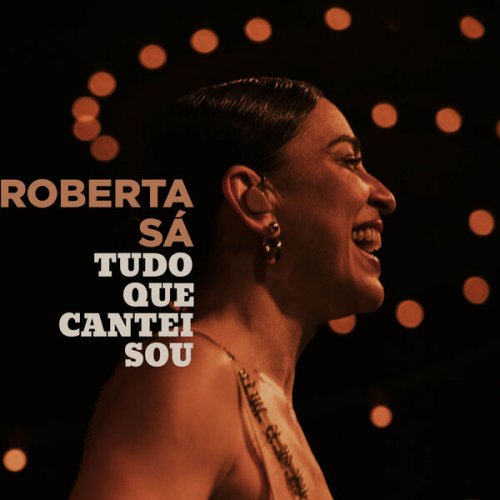
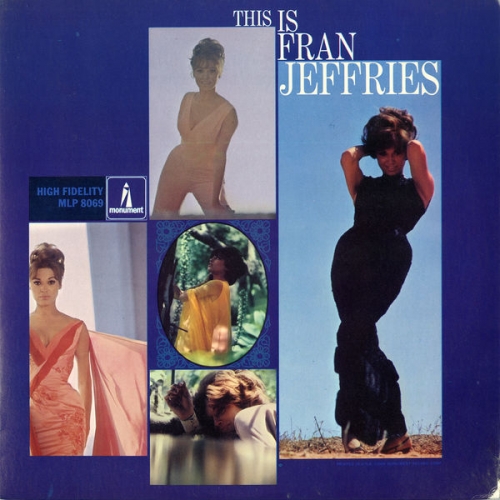
![Singular - SINGÜLAR (2025) [Hi-Res] Singular - SINGÜLAR (2025) [Hi-Res]](https://www.dibpic.com/uploads/posts/2025-12/1766913064_h3d0mb26iq5fb_600.jpg)
![Thelonious Monk - Brilliant Corners (1957) [2012 SACD] Thelonious Monk - Brilliant Corners (1957) [2012 SACD]](https://www.dibpic.com/uploads/posts/2019-04/1555690875_folder.jpg)
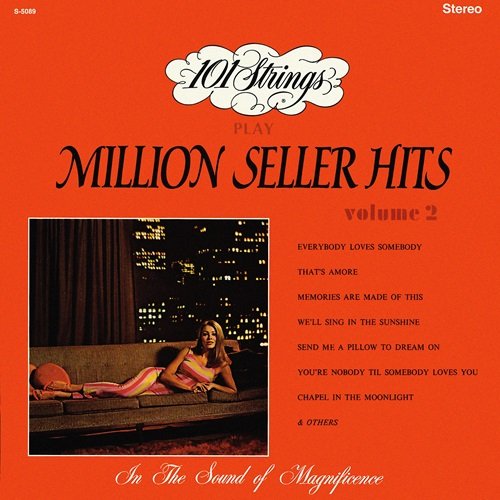
![Limotges - The Burt Bacharach Songbook (2025) [Hi-Res] Limotges - The Burt Bacharach Songbook (2025) [Hi-Res]](https://www.dibpic.com/uploads/posts/2025-12/1766823472_l6enc3v4rcqoc_600.jpg)
